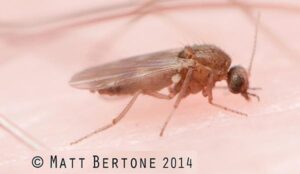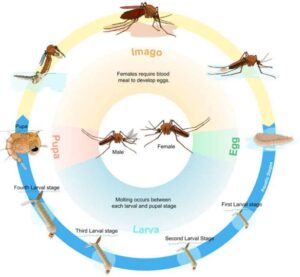What’s Biting You?
go.ncsu.edu/readext?955595
en Español / em Português
El inglés es el idioma de control de esta página. En la medida en que haya algún conflicto entre la traducción al inglés y la traducción, el inglés prevalece.
Al hacer clic en el enlace de traducción se activa un servicio de traducción gratuito para convertir la página al español. Al igual que con cualquier traducción por Internet, la conversión no es sensible al contexto y puede que no traduzca el texto en su significado original. NC State Extension no garantiza la exactitud del texto traducido. Por favor, tenga en cuenta que algunas aplicaciones y/o servicios pueden no funcionar como se espera cuando se traducen.
Português
Inglês é o idioma de controle desta página. Na medida que haja algum conflito entre o texto original em Inglês e a tradução, o Inglês prevalece.
Ao clicar no link de tradução, um serviço gratuito de tradução será ativado para converter a página para o Português. Como em qualquer tradução pela internet, a conversão não é sensivel ao contexto e pode não ocorrer a tradução para o significado orginal. O serviço de Extensão da Carolina do Norte (NC State Extension) não garante a exatidão do texto traduzido. Por favor, observe que algumas funções ou serviços podem não funcionar como esperado após a tradução.
English
English is the controlling language of this page. To the extent there is any conflict between the English text and the translation, English controls.
Clicking on the translation link activates a free translation service to convert the page to Spanish. As with any Internet translation, the conversion is not context-sensitive and may not translate the text to its original meaning. NC State Extension does not guarantee the accuracy of the translated text. Please note that some applications and/or services may not function as expected when translated.
Collapse ▲With the passing of tropical weather this past week, residents should be not be surprised to see an increase in biting insects. Biting flies and mosquitoes are the most common of these in Pamlico County, with the former being particular troublesome all summer long. Let’s discuss what options we have to manage these insects and how we can protect ourselves and our sanity from their annoyance.
Biting midges (Culicoides sp.) are small, sometimes barely-visible, blood-sucking flies more commonly known in many areas as biting gnats, sand flies, biting midges, punkies or “no-see-urns.” Their biting activity is extremely annoying, and during the past few months have been prevalent across all of Pamlico County. These insects breed in areas with fresh and saltwater habitat, with the immature larval stages feeding on decaying organic matter from wet mud and sand, and even decaying seaweed. Adults feed on liquid substances ranging from plant juices to body fluids of insects and the blood of vertebrates. Females of many species feed on mammals, including people, using these blood meals to produce eggs.
Control of these insects is difficult because only community wide insecticide applications can reduce populations, and even then only last a few days. With new generations of flies constantly being produced during warm weather months, chemical control is short lived. Physical barriers (window screens, clothing) and insect repellents are your best options. However, personal experience shows these options are often less than satisfactory if the populations are large. A fine mesh head net with repellent applied is the best method of relief that this author has find. If you would like more information on biting flies, visit the NC State Extension note titled “Biting Midges and Their Control”.
Mosquitoes may also be on the rise following recent tropical moisture. Mosquitoes breed in and around water, requiring this moisture to hatch eggs and support larval development. This means any standing body of water, no matter how small, can support mosquito development. “Tip & Toss” is the standard recommendation for mosquito control, which means anything that holds water should be either tipped over to drain or thrown away to remove it from the landscape. However, in coastal communities like Pamlico County, escape from mosquitoes is often not possible. Community wide control efforts are the most effective means of reducing populations and requires everyone in your neighborhood to participate.
Insecticides applied to landscapes (trees, yards, perimeter) may reduce populations in the short-term, but if rain or moisture persist mosquitoes will return. Mosquito “dunks” may also provide some control in small bodies of water that never dry up. These products contain a bacterial toxin that kills the immature insects but does not harm fish, birds, or humans. Follow the label directions of any insecticide product you use carefully. Read the label and find the section titled “Precautionary Statements” for information related to safety in the environment. For more information on managing mosquitoes, visit the NC State Extension Mosquito note.
As with biting flies, repellents and physical barriers provide some protection from mosquitoes. Products containing the active ingredient “DEET” are considered the most effective but other options are available. Read and follow the label directions when applying repellents, as some products have very specific requirements or limitations. For more information on the use of insect repellents, visit the NC State Extension Repellent note.
For more information on this or related subjects, please contact Daniel Simpson at (252)-745-4121 or Daniel_simpson@ncsu.edu.





